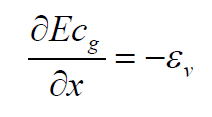...
XBeach was originally developed for simulating the behavior of sandy coasts under extreme / energetic hydrodynamic conditions, specifically the processes of dune erosion (e.g. Van Thiel de Vries, 2009) and dune overwash (McCall et al., 2010). However, over the years several developments have lead to the very broad range of applications that XBeach is used for nowadays. XBeach is not only applied on sandy coasts anymore, but also on gravel coasts and coasts fronted by coral reef systems. And more recently, XBeach is being used to study erosion of (muddy) tidal flats. In addition to sandy, gravel, coral and muddy coasts, XBeach has been extended with a number of formulations to be able to simulate flow and waves on vegetated coasts (e.g. mangroves, sea grass, kelp etc.).
Theory
This section describes the theory behind the current implementation in the XBeach model source code. However, at this moment code developments are ongoing, so this part is subject to change on a regular basis.
When waves propagate through a vegetation field, wave energy is dissipated due to the work carried out by the waves on the vegetation. When assuming normally incident waves, and neglecting wave growth, refraction and dissipation due to friction and wave breaking, the wave energy conservation equation can be written as:
where E is the wave energy density, c
...
g is the wave group velocity and εv is the time-averaged vegetation-induced rate of energy dissipation per unit horizontal area. A widely used method is to compute the time-averaged wave energy loss as the actual work carried out by the waves on the vegetation as function of the wave-induced drag force (e.g. Dalrymple et al., 1984):
...
where h is the water depth, αh is the vegetation height, F is the horizontal component of the force acting on the vegetation per unit volume, and u is the horizontal velocity. The overbar indicates averaging over time. When neglecting the plant swaying motion and inertial forces, the plant-induced force can be expressed with a Morison-type equation (Morison et al., 1950):
...


